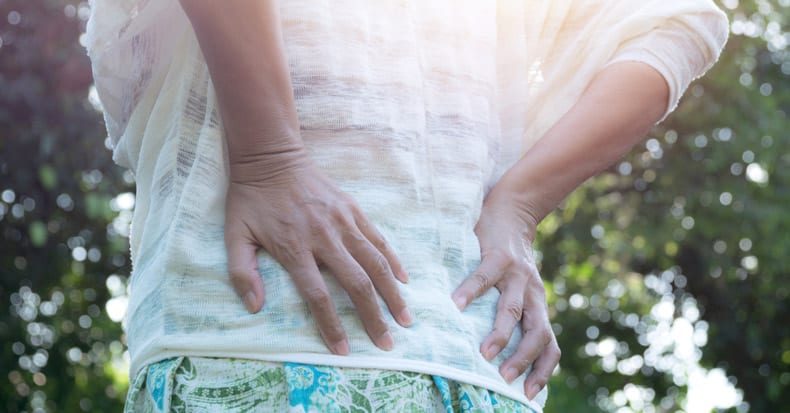When patients present with low back pain, it is not uncommon for pain to arise from areas other than the low back, such as the hip. There are many tissues in the low back and hip region that are susceptible to injury with have overlapping pain pathways that often make it challenging to isolate the truly injured area. Hip pain can present in many different ways.
When considering the anatomy of the low back (lumbar spine) and hip, and the nerves that innervate the hip come from the low back, it’s no wonder that differentiating between the two conditions is often difficult. Complaints may include the inside, outside, front, or back of the thigh, the knee, the buttocks, the sacroiliac joint, or the low back and yet, the hip may truly be the pain generator with any of these presentations. To make diagnosis even more complex, the hip pain patient may present one day with what appears to be sciatic nerve pain (that is, pain shooting down the back of the leg to the knee if mild or to the foot if more severe) but the next visit, with only groin pain. When pain radiates down a leg, the almost automatic impression by both the patient and their healthcare provider is, "…it’s a pinched nerve." But again, it could be the hip and NOT a pinched nerve that is creating the leg pain pattern. Throwing yet another wrench in the works is the fact that a patient can have more than one condition at the same time. So, they truly MAY simultaneously have BOTH a low back problem AND a hip problem. In fact, its actually unusual to x-ray the low back of a hip pain patient without seeing some low back condition(s) like degenerative disk disease, osteoarthritis (spurs off the vertebrae), or combination of these. So, how do we differentiate between hip vs. low back pain when it is common for both low back and hip pain to often coincide?
During our history, we often ask the question, "…what activities make your pain worse?" If the patient replies that weight bearing activities like standing, walking, getting up from sitting, etc., provoke the pain (and they point to the front or side of the hip), a hip-related diagnosis is favored but it STILL may be arising from the low back or both! If they say, "…crossing my right leg over the other hurts in my groin," then that’s getting more hip pain-specific as hip rotation is frequently lost before the forward flexion motion. When we ask the hip pain patient to point to the area of greatest discomfort, they usually point to the front of the hip or groin, and less often to the inner and/or anterior thigh or knee. Non-weight bearing positions like sitting or lying are almost always immediately pain relieving. When there is arthritis in the hip, motion loss is often reported and may include a shorter walking stride and pain usually gets worse the longer these patients are on their feet. Initiating motion often hurts, sometimes even in bed when rolling over. During the chiropractic examination, with the patient lying on the back with the knee and hip both bent 90°, moving the bent knee outwards or inwards will almost always reproduce hip/groin area pain. Pulling on or applying traction to the affected leg usually, "…feels good." Knee & ankle reflexes and sensation are normal but muscle strength may be weak due to pain. Bending the low back into different positions does not reproduce pain if the pain is only coming from the hip. Though sometimes challenging, doctors of chiropractic are well-trained to be able to differentiate between hip and low back pain and will treat both areas when it is appropriate.



